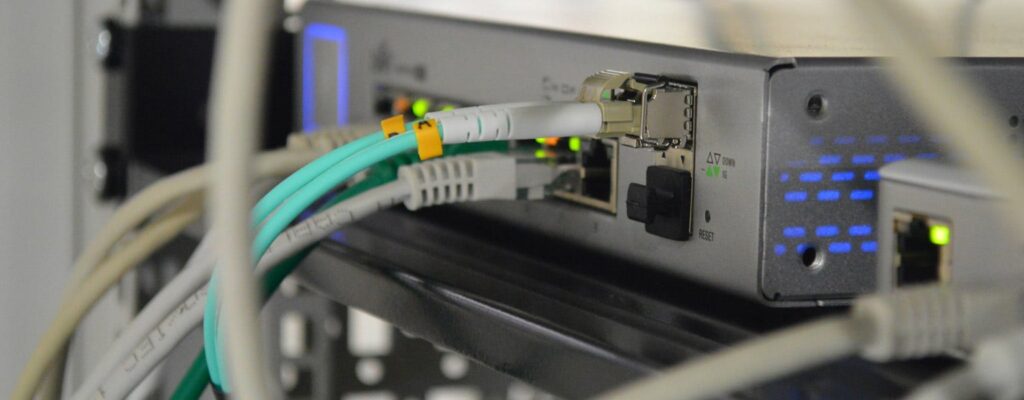What Is the Difference Between Break/Fix and Managed IT Services?
Contents
Key Takeaways
-
Learn what distinguishes Break/Fix IT (reactive, pay-per-incident) from Managed IT Services (proactive, ongoing monitoring and strategic alignment).
-
Understand the trade-offs in cost structure, downtime risk, security posture, and scalability between the two models.
-
Explore how to decide which model aligns best with your business size, uptime needs, and risk tolerance.
-
See strategies for transitioning from Break/Fix to Managed Services, including pilot programs and setting clear service-level expectations.
-
Real-world examples demonstrating how businesses benefit (or pay more) depending on which model they use.
In today’s digitally driven business environment, reliable IT systems are more than just operational necessities – they’re vital to maintaining productivity, security, and competitive advantage.
Businesses have two primary support models to consider: Break/Fix IT services, which respond only when something goes wrong, and Managed IT services, which take a proactive, strategic approach. Understanding the differences between these models is essential for making informed decisions that align with your business’s needs, budgets, and growth plans.
What Is Break/Fix IT Support?
Break/Fix is a reactive IT support model – meaning service is provided only when an issue arises. A technician is called in to diagnose and fix the problem, and the client is billed for labor and parts on a per-incident or hourly basis.
Some of the perceived benefits of this model include:
- No recurring monthly costs or long-term contracts – appealing to businesses with tight budgets or minimal reliance on technology.
- Greater control and simplicity – you decide when and how outside IT professionals interact with your systems.
But there are drawbacks too:
- Unpredictable costs – bills can quickly escalate during serious outages or emergencies (Wikipedia).
- Increased downtime – the provider may not be familiar with your system, and travel/response times extend disruption.
- Reactive nature – issues are only addressed when they become significant, leaving root causes unaddressed (Wikipedia).
Overall, while break/fix can serve businesses with minimal IT demands or internal capabilities, its shortsightedness can be costly in the long run.
What Are Managed IT Services?
Managed IT Services operate on a subscription-based, proactive support model. A Managed Service Provider (MSP) monitors, maintains, and manages your IT systems continuously – typically under a service-level agreement (SLA) – for a predictable monthly fee.
Key features often included:
- 24/7 monitoring and helpdesk support, with remote management tools that catch issues before they emerge (Gravity Systems).
- Cybersecurity protections, including patch management, intrusion detection, and compliance oversight.
- Backup, disaster recovery, and strategic IT planning – turning IT from just a cost center into a strategic asset.
Advantages of this model include:
- Predictable, scalable costs that make budgeting easier compared to per-incident charges.
- Lower downtime, as proactive maintenance mitigates many issues before they disrupt operations (The KR Group, Inc.).
- Improved security posture through continuous oversight rather than reactive fixes.
- Strategic partnership – MSPs are incentivized to keep your IT running smoothly and aligned with business goals (Reddit).
Key Differences Between Break/Fix and Managed IT Services
| Feature | Break/Fix | Managed IT Services |
|---|---|---|
| Approach | Reactive: Fix issues when they occur | Proactive: Monitor and prevent issues |
| Cost Structure | Variable per incident or hourly billing | Predictable monthly subscription |
| Downtime Risk | High – longer waits and reactive fixes | Low – issues caught early |
| Security | Reactive, only when problems emerge | Continuous defense and updates |
| Scalability | Limited – unsuited for dynamic growth | High scalability and integration of new tech |
| Strategic Planning | Minimal – focus on the immediate issue | Integral – aligns IT with business strategy |
Which Option Is Right for Your Business?
Considerations:
Business Size & Complexity
- Break/Fix may suit very small businesses with only a few devices and minimal IT reliance.
- Managed IT Services benefit growing businesses with complex infrastructure and higher uptime/stability demands.
Budget Predictability vs. Risk
- Break/Fix offers avoidance of monthly fees – but can lead to cost spikes and productivity loss.
- Managed Services provide stable costs and reduce risk through continuous protection.
Downtime Tolerance & Security Needs
- If downtime is costly (e.g., professional services, healthcare, retail), Managed Services reduce risks significantly.
- Compliance-heavy or data-sensitive sectors demand the proactive oversight MSPs deliver.
Long-Term Growth & Strategy
- Managed Services can adapt to growth and enable technology-driven business improvements.
- Break/Fix may serve as a temporary, stop-gap measure – but falls short as technology evolves.
Real-World Insights
One MSP practitioner in an industry forum explained:
“Break-fix is a reactive service; you ‘react’ to problems … Managed Services is more about being proactive… The goal with Managed Services is to keep your client running optimally and securely at all times.” (Reddit)
Numerous firms report benefits like 25–40 % cost reductions, improved security, and more efficient operations when switching to Managed Services.
Transitioning from Break/Fix to Managed IT Services
If you’re considering moving to a managed model, here’s a smooth path forward:
- Assess your current IT environment – identify pain points, costs, and areas needing protection.
- Select an MSP that aligns with your needs, and negotiate clear SLAs covering response times, services, and expectations.
- Pilot before full rollout – start with critical systems to build confidence and minimize disruption.
- Review and adapt your service agreement as your business evolves.
Some businesses opt for a hybrid approach – critical infrastructure falls under Managed Services, while non-essential systems remain on Break/Fix until needed.
Future-Proofing Your IT Strategy
Break/Fix and Managed IT Services represent fundamentally different philosophies in IT support. Break/Fix offers flexibility and upfront cost avoidance – but at the expense of predictability, security, and resilience. Managed IT Services, while involving ongoing fees, deliver stability, proactive maintenance, and strategic alignment – benefits that often pay dividends in reduced downtime, improved security, and better business performance.
As technology becomes ever more integral to business success, businesses that choose proactive support models gain not just efficiency – but competitive advantage. If you’re ready to evolve your IT support or explore how Managed Services can benefit your organization, we’re here to help guide your next steps.
FAQ’s
-
Break/Fix is a reactive IT support model where services are provided only when issues arise, leading to unpredictable costs and potential downtime. In contrast, Managed IT Services offer proactive, ongoing support through a fixed monthly fee, focusing on continuous monitoring, maintenance, and strategic planning to prevent issues before they occur.
-
While Break/Fix may seem less expensive initially, it often results in higher long-term costs due to unexpected repairs and downtime. Managed IT Services provide predictable monthly expenses and can lead to cost savings by reducing the frequency and severity of IT issues.
-
Break/Fix can cause disruptions and downtime, affecting employee productivity and business operations. Managed IT Services minimize these disruptions through proactive maintenance and quick resolution of issues, ensuring smoother business operations.
-
Break/Fix provides reactive security measures, addressing issues as they arise. Managed IT Services offer continuous security monitoring, regular updates, and compliance management, proactively safeguarding against threats and ensuring adherence to industry regulations.
-
Break/Fix provides reactive security measures, addressing issues as they arise. Managed IT Services offer continuous security monitoring, regular updates, and compliance management, proactively safeguarding against threats and ensuring adherence to industry regulations.



